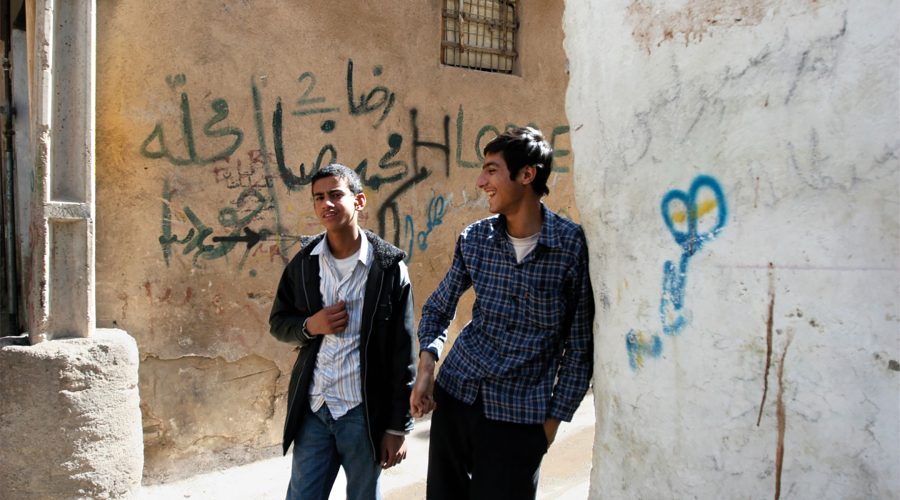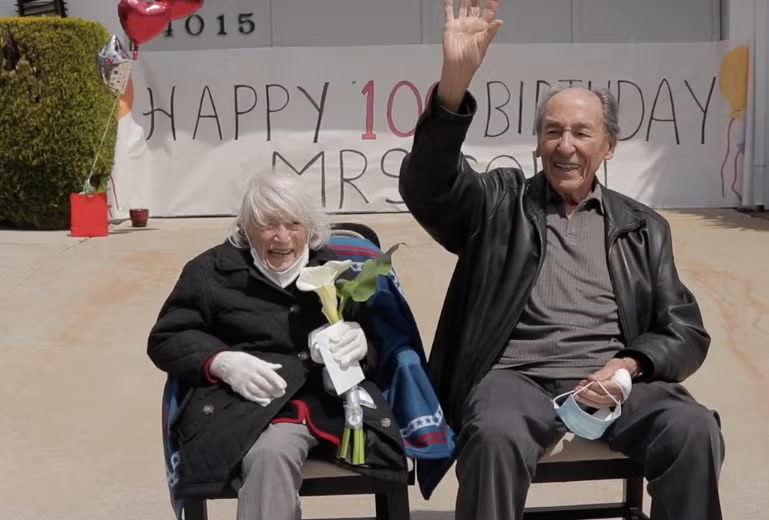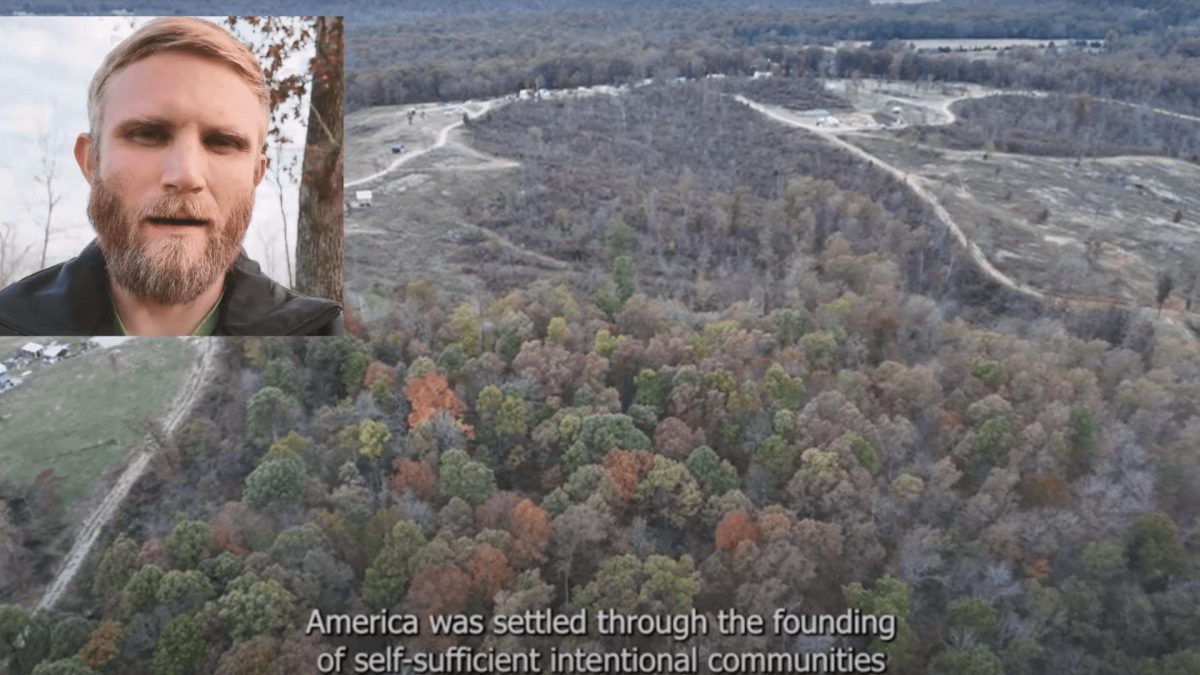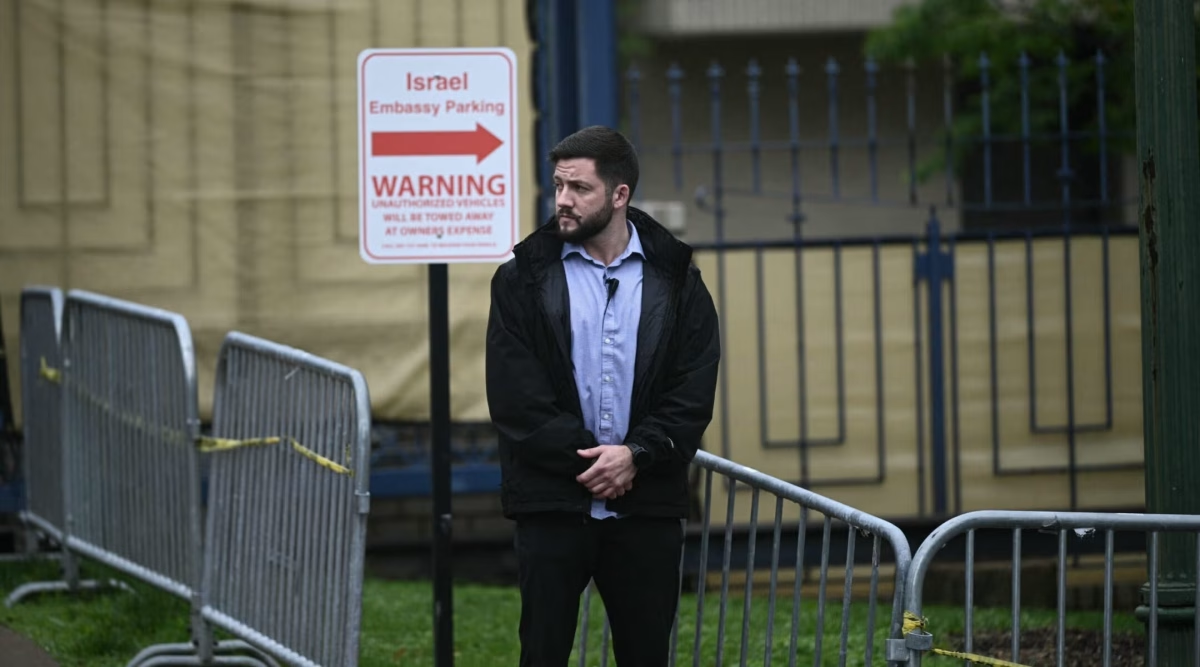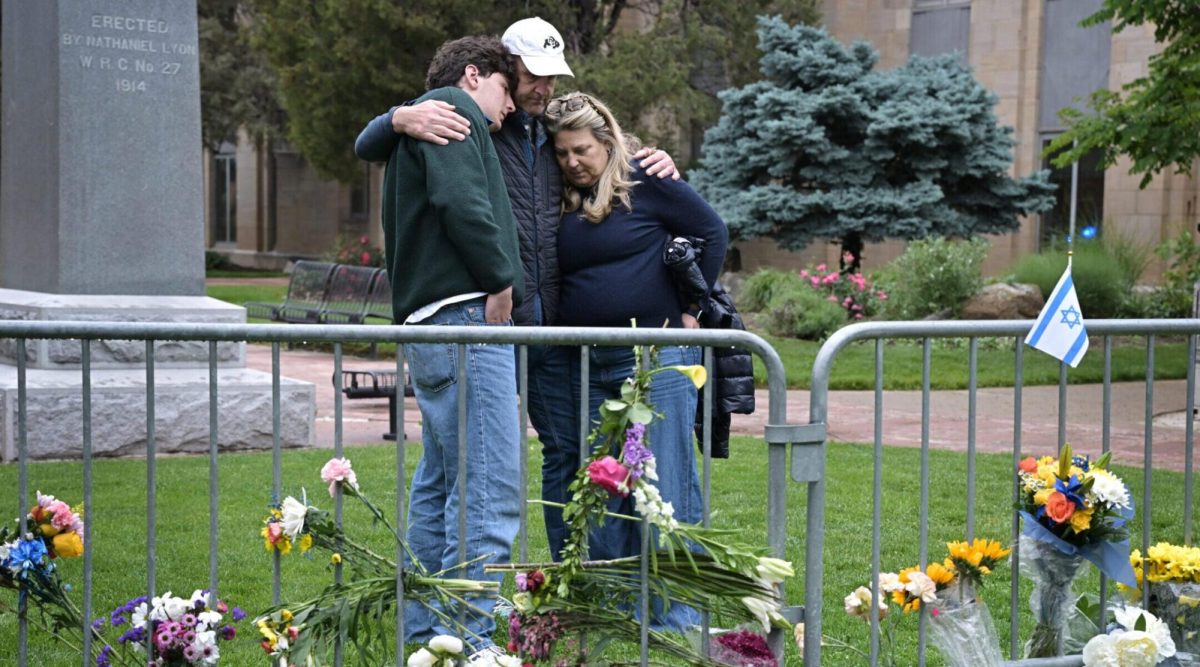(JTA) — Jewish prayer in a mosque. Hookah smoke in a kosher kitchen. Hebrew school study under portraits of ayatollahs.
When former Associated Press photographer Hassan Sarbakhshian spent almost two years between 2006 and 2008 among the Jewish communities in Iran, those are some of the images he collected for a book project. The photographs offer a rare look inside Jewish homes, synagogues and other spaces, which the Jewish community normally keeps fairly locked down to outsiders.
In Iran, a nation whose post-1979 revolution government regularly calls for the violent destruction of Israel, Jews are famously allowed to practice their religion freely and feel a strong connection to their country. There is a permanent Jewish representative in parliament.
But when Sarbakhshian submitted the book to Iran’s culture ministry for publication, he ran up against the country’s pervasive anti-Zionist culture.
The ministry argued that he was an agent of Israel promoting anti-Islamic values. They forced him out of working for the AP, and he eventually began to fear for his and wife’s safety. They moved to Virginia.
Nearly 15 years after taking his last photos for the book, which will finally be published on Tuesday by Penn State University Press, Sarbakhshian still calls the project that led to the ordeal one of the best experiences of his life.
“We traveled to more than 15 cities on a bus with [Iranian Jews]. We laughed with them, we ate with them. We lived with them, actually,” he said.
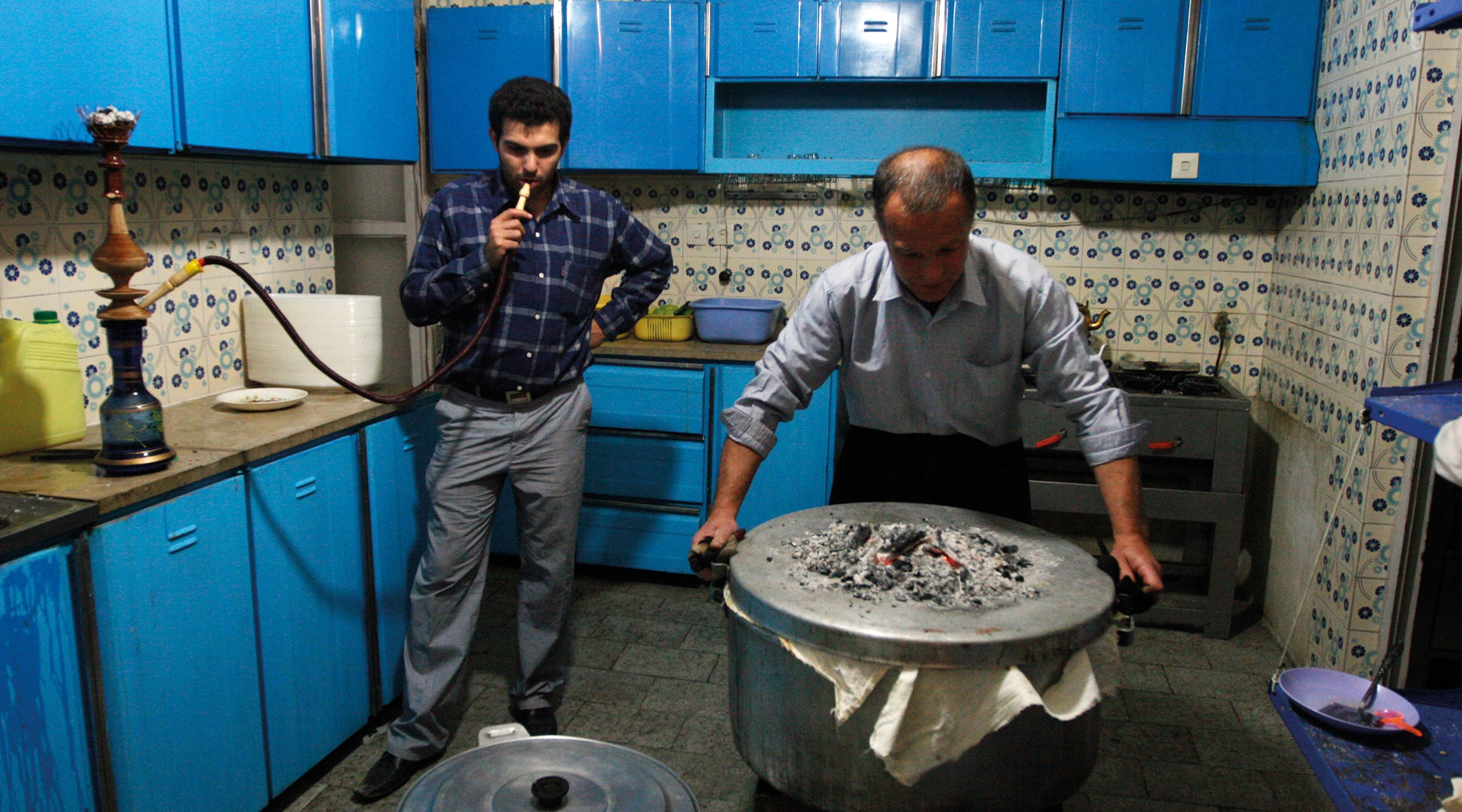
The kitchen of a kosher restaurant in Isfahan. (Hassan Sarbakhsian)
As of 2020, there were 9,000 Jews living in Iran. It’s a far cry from a pre-revolution peak Jewish population of around 100,000, but the country is still home to the second-largest Jewish population after Israel. Some of Sarbakhshian’s pictures almost look like they could have been taken in an American suburb: kids playing soccer, people having a picnic in the park, family members running around slapping each other with scallions.
But other photos in the book demonstrate Jews’ precarious status in a country that makes them continually pledge loyalty to the Muslim theocratic state. One shows a Jewish leader at a mosque attending a celebration of Quds Day, a day of pro-Palestinian rallies that often include Israel flag burnings and anti-Israel rhetoric.
Some of the images also give a modern context for key moments in Iranian Jewish history, including the time Iran provided refuge to Polish Jews fleeing the Holocaust, the time in 1999 when 13 Iranian Jews were falsely accused of spying for Israel and the history of the Dr. Sapir Hospital and Charity Center, a Jewish hospital that treated protesters before the revolution without alerting secret police. The hospital still operates today.
The book’s text is co-written by Parvaneh Vahidmanesh, a journalist and human rights activist married to Sarbakhshian, along with Penn State Jewish studies professor Lior Sternfeld.
“I hope that we can do more than one book about this community,” Sarbakhshian said.
In an interview, Sarbaskshian — who now works for Voice of America — spoke candidly about his project, how it came to be published and his hopes to return to Iran one day.
The conversation has been edited for length and clarity.
JTA: How did this book come to be?
HS: After President [Mahmoud] Ahmadinejad was elected in 2005, my press access was restricted. So I decided to just change my field from news to features, and cover all the minorities, not only the Jews but also Assyrians, Armenians and Christians.
But when Ahmedinejad denied the Holocaust, it was the best time for me to focus on this subject. The future was so unclear. I didn’t know if it would be possible to publish in Iran or not. But definitely the goal, first, was publishing a book in Iran. Me and my wife, Parvaneh [Vahidmanesh, a journalist and human rights activist], decided to give this book to Iran’s Ministry of Culture, which you have to do if you want to publish anything in Iran. So we did that, and after a year, we started receiving accusations of being sponsored by Israel and creating propaganda against Islamic values. I was banned from working for the Associated Press. They revoked my press pass.
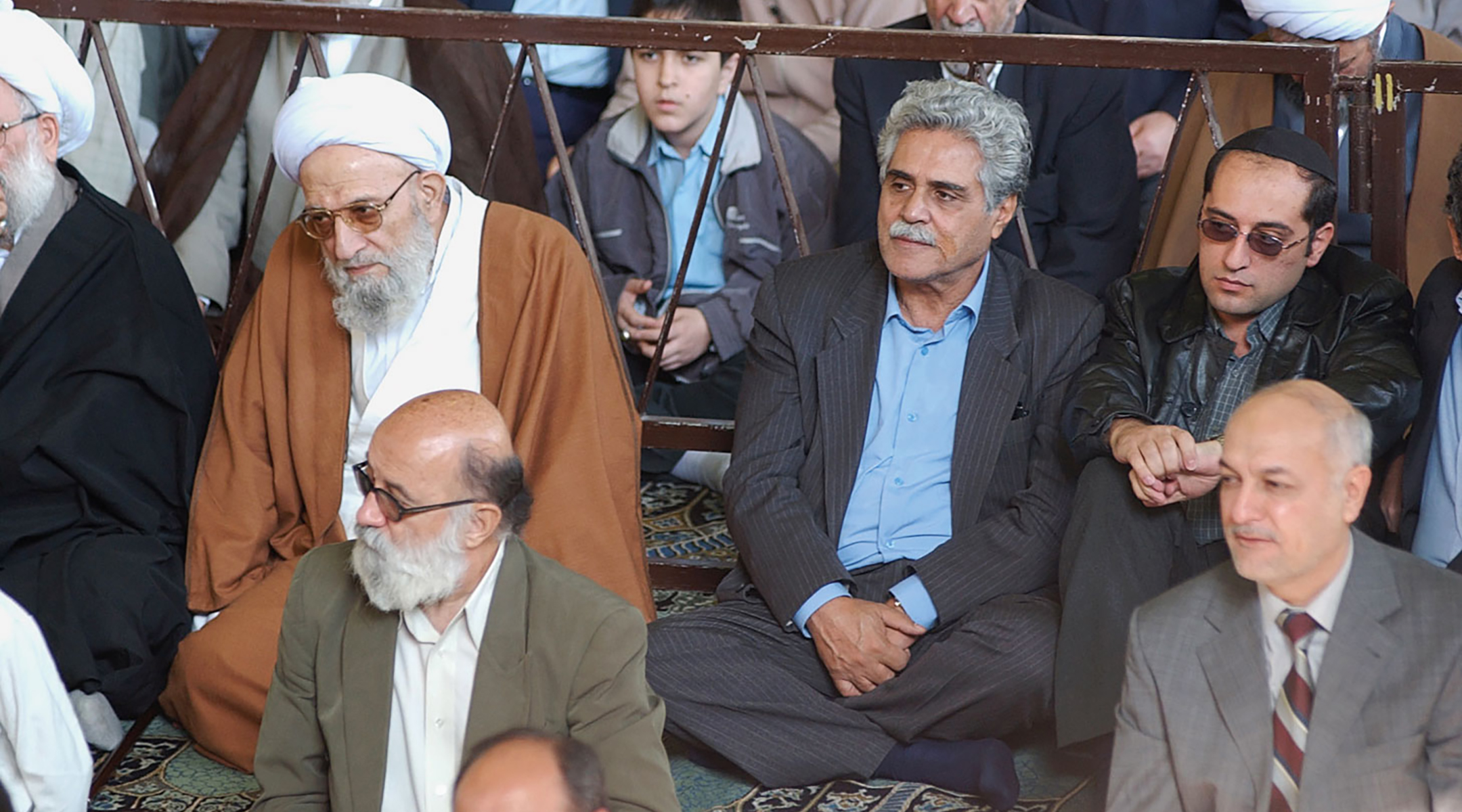
Haroun Yashayaei, the former head of Iran’s Jewish community, shown in center, attends a Muslim Friday prayer to show solidarity with the Palestinians. (Hassan Sarbakhsian)
So the book never got published in Iran, and we were forced to leave Iran and came to the U.S. Some cultural organizations here were interested in publishing the book, but it didn’t happen until I met Lior [Sternfeld, a Jewish studies professor at Penn State University]. He was the main engine who took this project to Penn State.
Can you speak more about the challenges you faced working on this project?
As a Muslim, it was so difficult to gain the trust of the Jewish community. It’s so weird to go deep into the very closed society they have. I completely understand and respect it, and I greatly appreciate their acceptance of what we covered because they trust us.
The other part of the challenge was the official part. The government runs the media and TV. There’s no private media. And everything connected with the Jewish community related easily to Israel. Israel is a complete red line; you can’t do anything related to that. Everything related to the Jewish people in Iran is completely political. They deny any relations with Israel, but anything Jewish people do goes straight to that because of the regime’s propaganda.
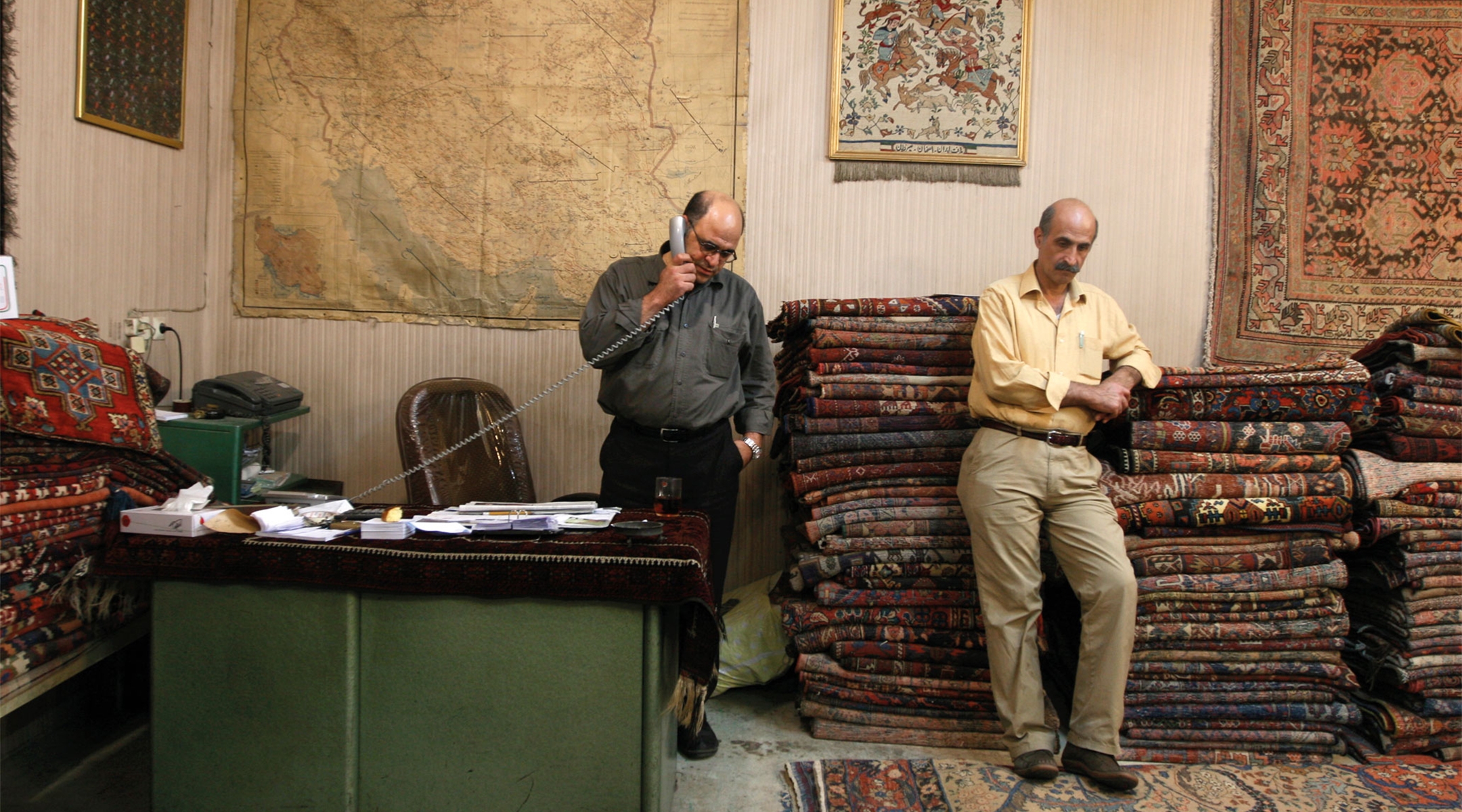
A Jewish carpet shop in the Tehran Grand Bazaar. (Hassan Sarbakhsian)
As a person who worked for foreign media in Iran, I had a good chance to access this community. Everywhere we went, we had to receive a letter from the Ministry of Culture and Islamic Guidance. They sent it to the Jewish association, who could accept or deny access. Luckily, they accepted mine. But as I told you, as a local photographer in Iran, it’s difficult to break this wall. It’s a really closed society, and I completely understand their concerns. But I’m really glad we did it.
A lot of the photos you took take place in private settings like synagogues and people’s homes. How did you earn their trust, and what was that experience like?
Going behind the walls of Jewish people’s lives in Iran, it’s impossible for non-Jewish Iranians. There’s no way to go there. But I had been working as a photographer for the Associated Press, so I had taken photos of this community before, and my photos were seen by Jews in the U.S., Europe, Israel and more. So the community trusted me when feedback came through friends and family members who’d seen my pictures. That was part of it.
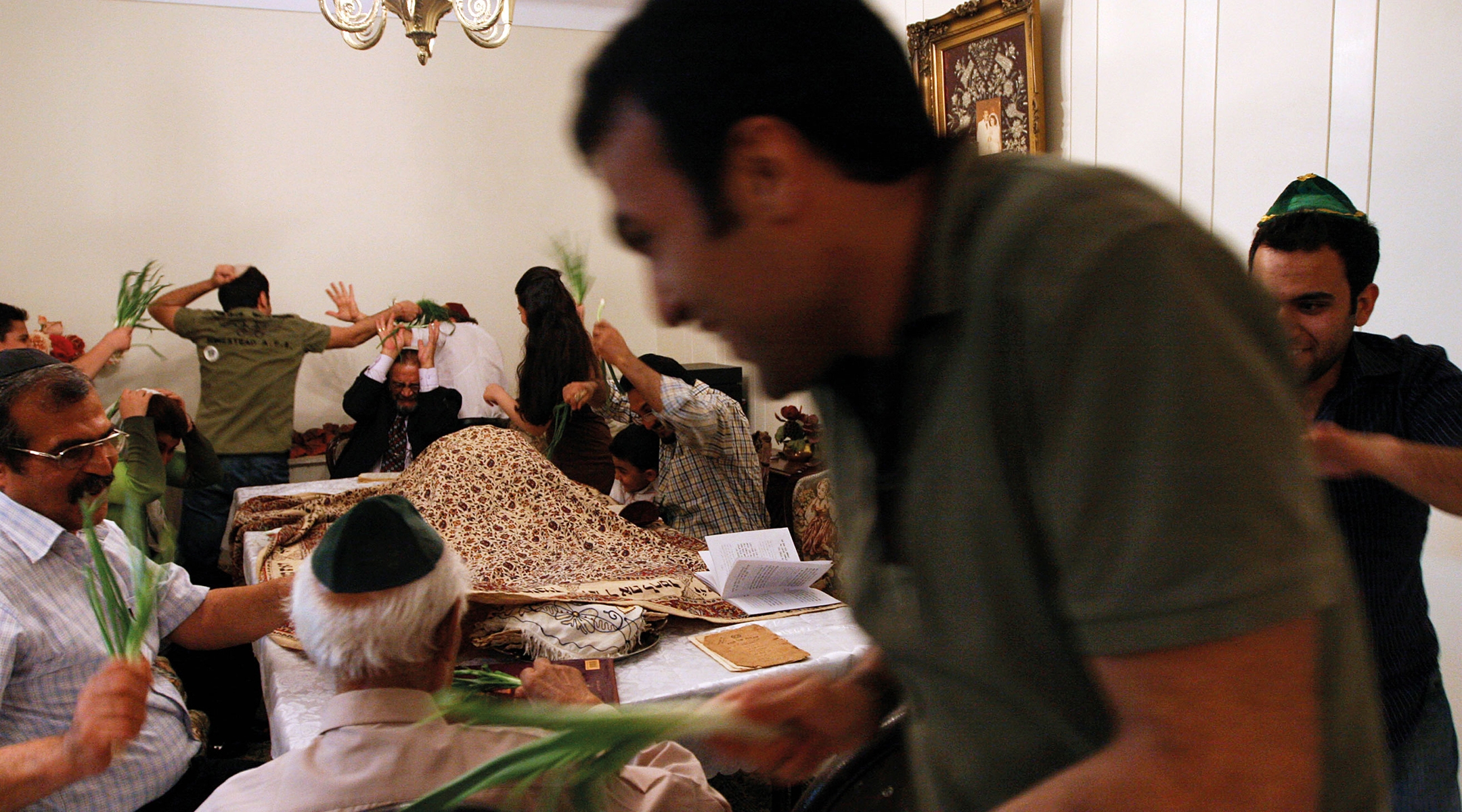
On Passover in Tehran, no one is spared from dayenu action. (Hassan Sarbakhsian)
The second part was that we formed a friendship with them. Not me, mostly my wife. We went together to their houses. They invited us to their private parties, like weddings or gatherings. Whatever you see in this book, it’s based on the trust of each side. It was not easy. But we didn’t just go once and then say goodbye. It was a 2-year project. We traveled to more than 15 cities on a bus with them. We laughed with them, we ate with them. We lived with them, actually. It was not like just come and take a picture and go. It was one of the best experiences of my life.
What was your favorite picture you took, and why?
I cannot go back to Iran unless there’s a regime change. So all of the pictures are my favorite. Each of them.
But the most complex picture I took was in a praying room that belonged to Muslims. But because there are so many restrictions in Iran for Jewish people traveling — there aren’t many kosher restaurants or synagogues — they rented a Muslim prayer room. On the walls, there were Muslim signs and a picture of an imam. In the picture I took, Jews are preparing to pray. When I took that picture, I said, “This is really a special picture.
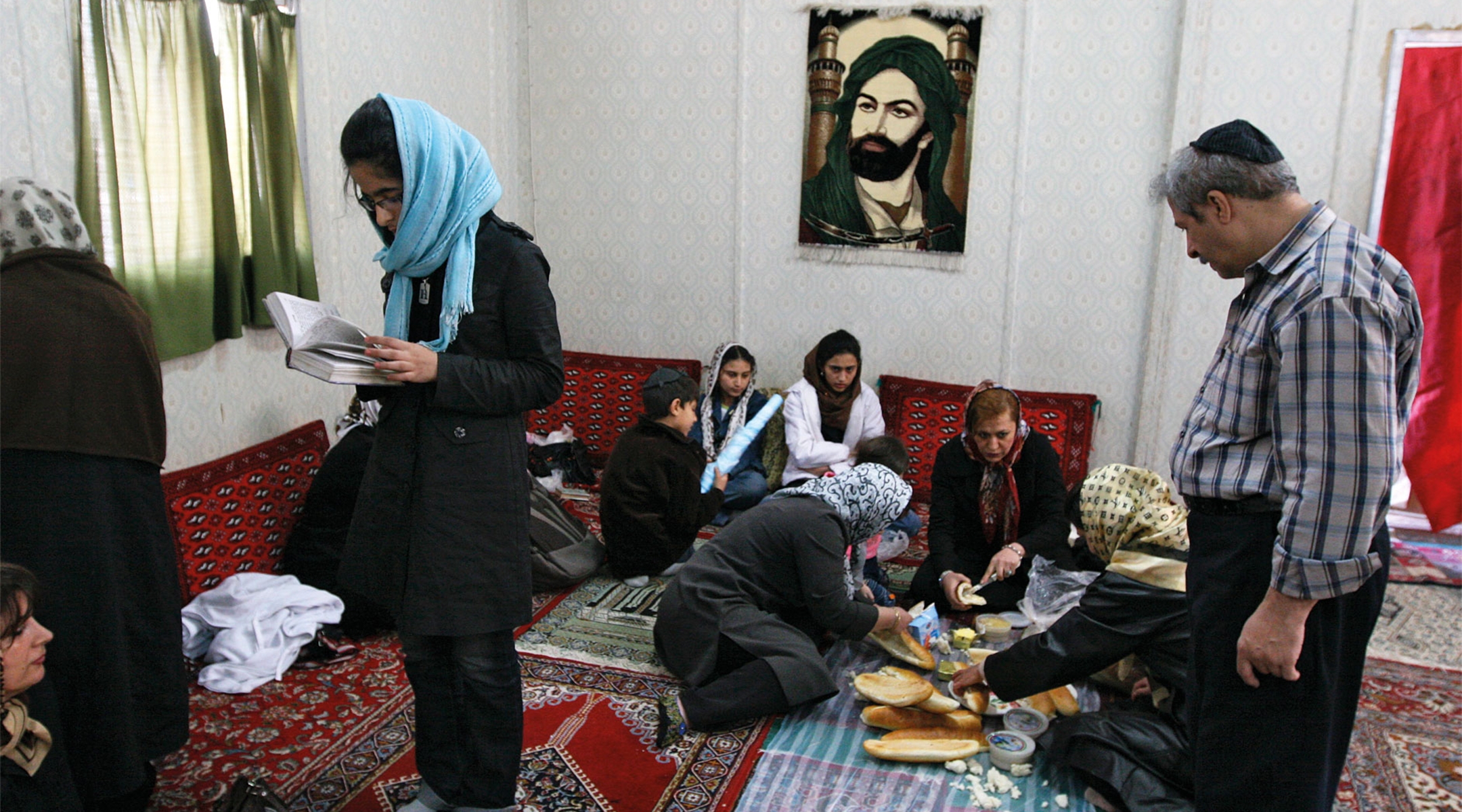
On their way to visit the tomb of Esther and Mordechai in Hamedan, Jews stop to pray in a Muslim prayer room. (Hassan Sarbakhsian)
Also, I took a picture of two or three people from the Jewish association attending Friday prayer with the Muslims and listening to a Shia Muslim imam speaking. It’s a bit strange. Sometimes, you can’t believe what you see. But that’s the reality in Iranian society.
What did you learn about Iran’s Jewish community while working on this project?
I didn’t realize how many restrictions were placed on the Jewish community in Iran. When you are a minority and majority society, it’s not easy to live a normal life. I’ve lived in the U.S. and Europe for more than a decade now. I’m happy I have this experience, but I’m not happy I had to leave Iran, because I wanted to continue this project in other communities too, not only in the Jewish community.
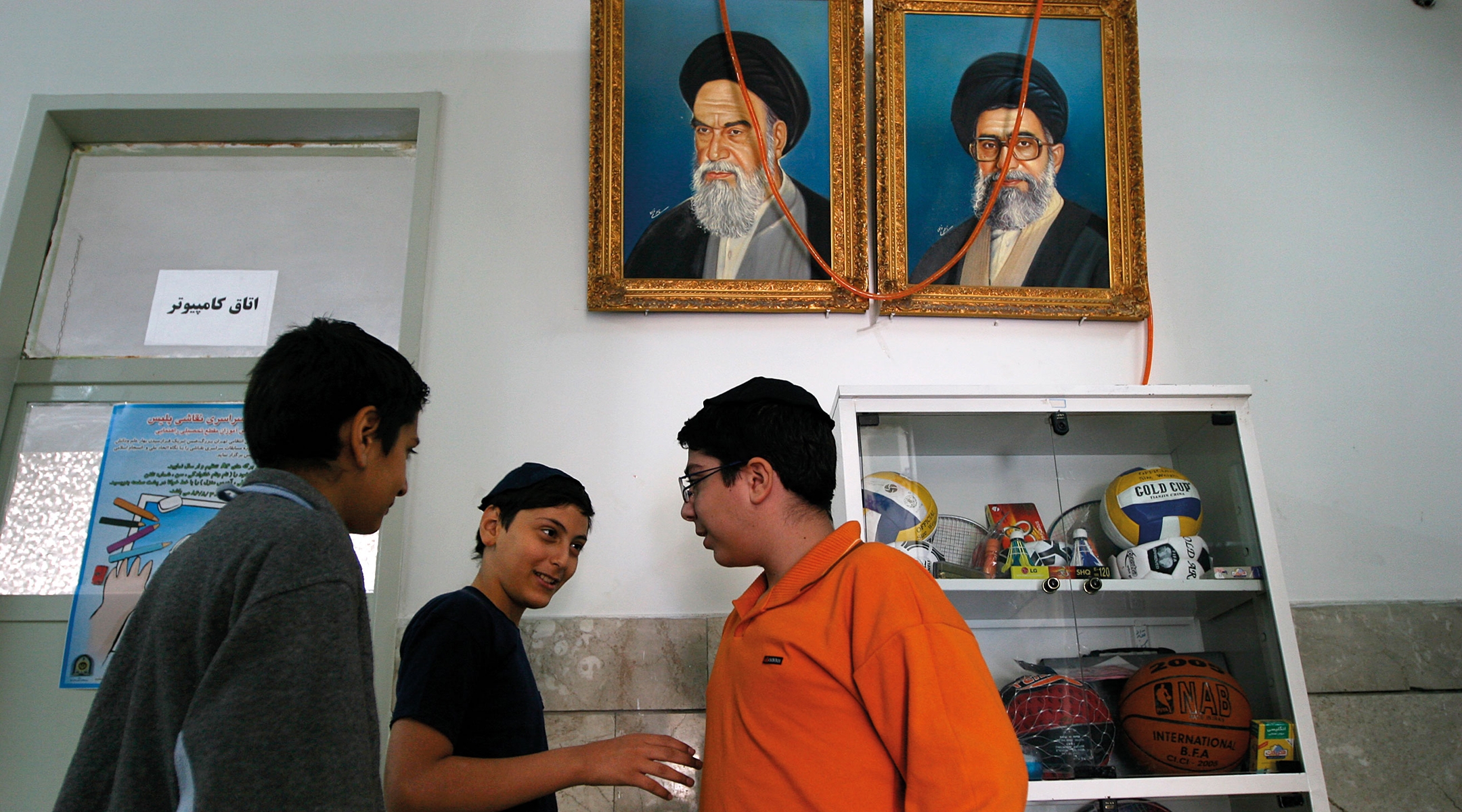
As boys play at school, portraits of ayatollahs loom overhead. (Hassan Sarbakhsian)
If I have a chance to go back to Iran, I definitely know what else I have to do. I will go deep and deep and deep again. When you are living in a society, you don’t know what valuable things surround you. When you no longer have access to that, you understand how valuable things were that you didn’t even notice. For example, the area I worked in was the center of Tehran, and many Jewish people had businesses there. I so regret not taking all of those pictures. I regret not talking to them. So if I have a chance to go back there, maybe I can do more. If I cannot, maybe the young people know what valuable things they have now and will go and cover those.
And you took photos from the Dr. Sapir Hospital and Charity Center in Tehran, which is funded and run by the Jewish community. Can you talk about the meaning behind that?
That hospital is something unique. It was created decades ago, and they don’t ask your religion; you just go there and you can get treatment. I took a very complex photo of a Jewish doctor at that hospital holding a Muslim baby, born just a few hours earlier, in his hand. It means a lot to help people of your country when you don’t know what will happen in the future.
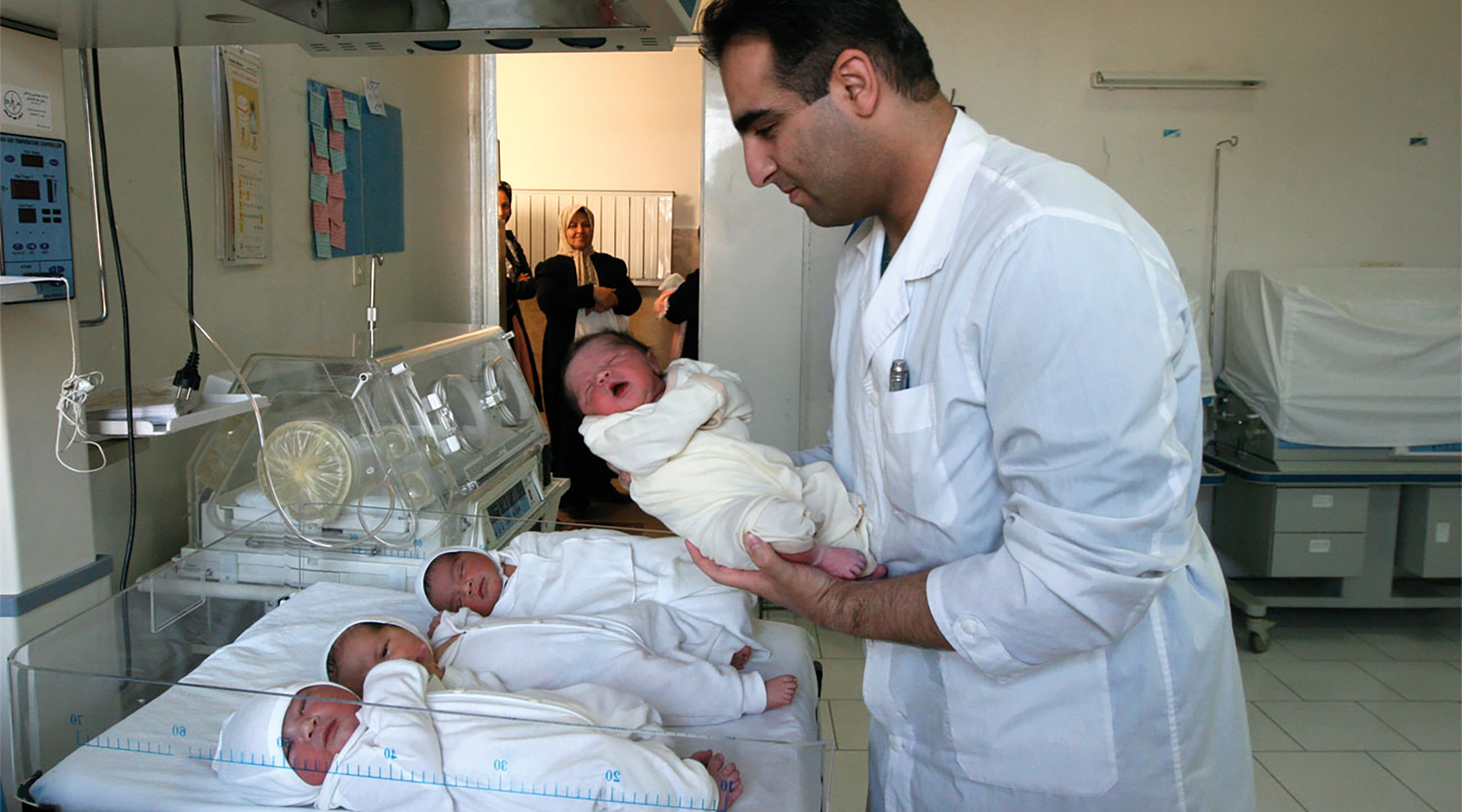
A Jewish doctor holds a newborn Muslim baby at the Jewish-owned Dr. Sapir Hospital and Charity Center. (Hassan Sarbakhsian)
Sometimes, Jewish young people I talked to said they wanted to leave the country. I completely understand why: because you can’t get high job opportunities in government administration — no way. But returning to your question, the hospital is amazing. They trust people, and people trust them also. Jews work together with Muslims, not only in the hospital but in other places, too, like the bazaar in Tehran. But, of course, they never go to each other’s houses, though maybe they do and I just don’t know about it.
What do you hope that readers will gain from this book?
I hope they see this book as an example of Iranian society, not only Jewish people. I see myself in this book. I see every Iranian in this book. These people are facing restrictions, but they still say, “We are Iranian.” Of course, this book is about the Iranian Jewish community. But for me, it’s a little bit more. It’s reading about Iranian history and how complex the society is. I see, in each of these pictures, each Iranian who is forced to live outside of Iran, even though these people are inside Iran. I’ve lived for more than a decade in exile as a minority in a completely different society in Europe and the U.S. I traveled in Israel, too. I saw many similarities between Iran and Israel, and many differences.
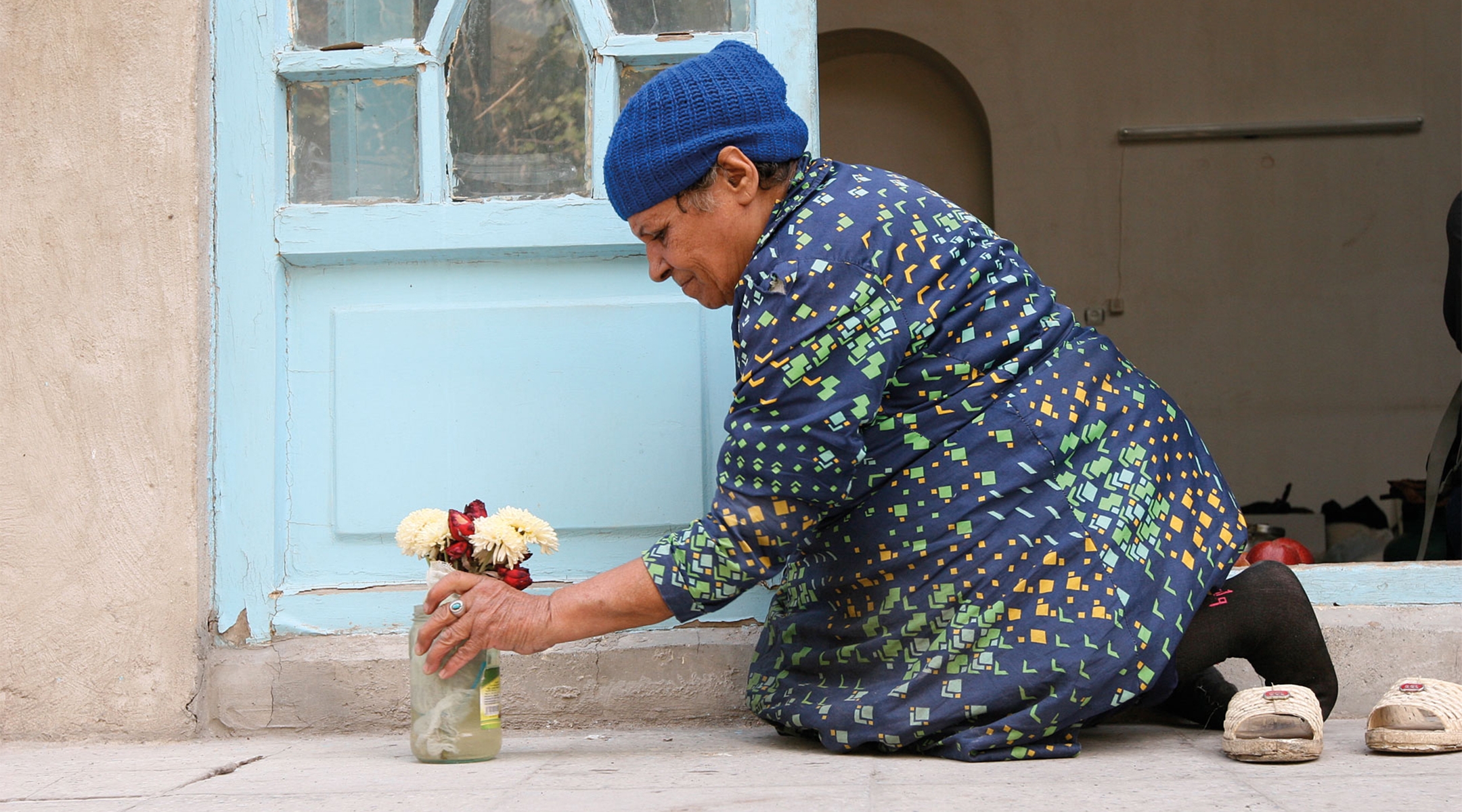
As of the taking of this photograph in 2007, Shamsi was one of three Jews who live in the Ezra Jacob Synagogue in Tehran. (Hassan Sarbakhsian)
I hope that we can do more than one book about this community. I didn’t see this kind of book about the Iranian Jewish people, unfortunately. I don’t know why it didn’t happen before — maybe because of all the restrictions. People cannot travel easily to cover these communities. Foreign people go only five days, one week, two weeks maximum, and then they leave the country. That’s why we need to record all the documents for history. This is about history. This is about all people who suffer.
What similarities did you see between Iran and Israel?
There are hardliners on both sides, people who don’t respect other people, don’t listen to you and still believe whatever they believe. But you also see people who are really open-minded in both societies. There’s two different things: one, people, and the other thing, governments. We need to put a sharp line between these things. Those governments have such different visions against each other, but they both have restrictions on their people. Of course, Israel is a democracy, but I see the restrictions.
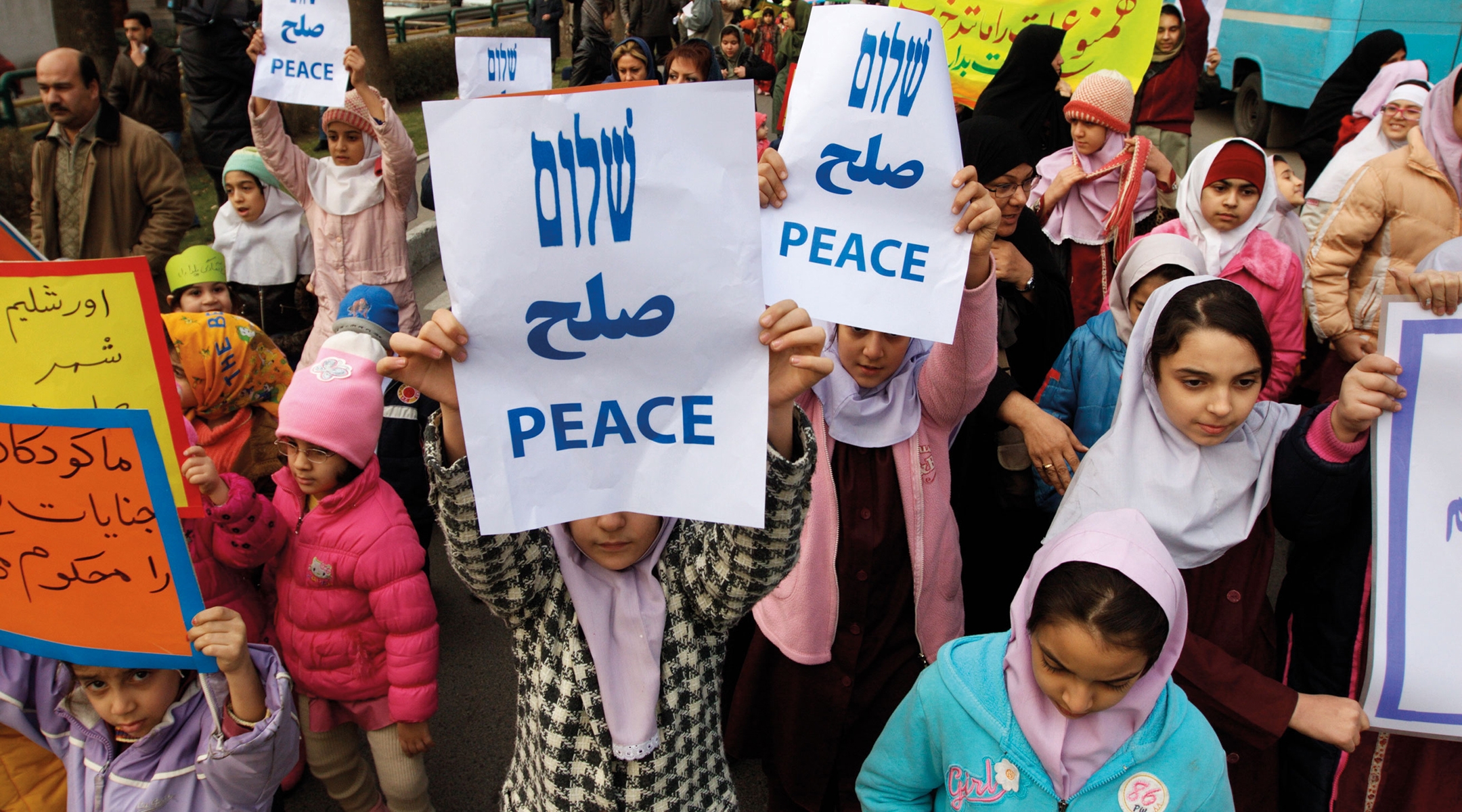
Jewish girls demonstrate for peace in Tehran. (Hassan Sarbakhsian)
I actually produced a 20-minute documentary from my trip to Israel [in Farsi, with no subtitles]. I spoke with a Jewish girl who’d never even lived in Iran, whose parents traveled from Iran to Israel, and she’s facing discrimination in Israel. Or the man in his 60s who says, as soon as he wants to speak Hebrew, because of his Eastern accent, they don’t accept him. This discrimination is unbelievable for me because that society is based on religion. Unfortunately, in the past 43 years, we see the disconnection between societies. Before, it was not like that. There are many facilities Israeli people built in Iran. At the same time, there are many Iranian Israelis living and working in Israel now. These two nations are so connected, but for the past 43 years, misunderstanding has created a disconnection.
—
The post He captured rare images of Jewish life in Iran. Then he fled, fearing for his safety. appeared first on Jewish Telegraphic Agency.



